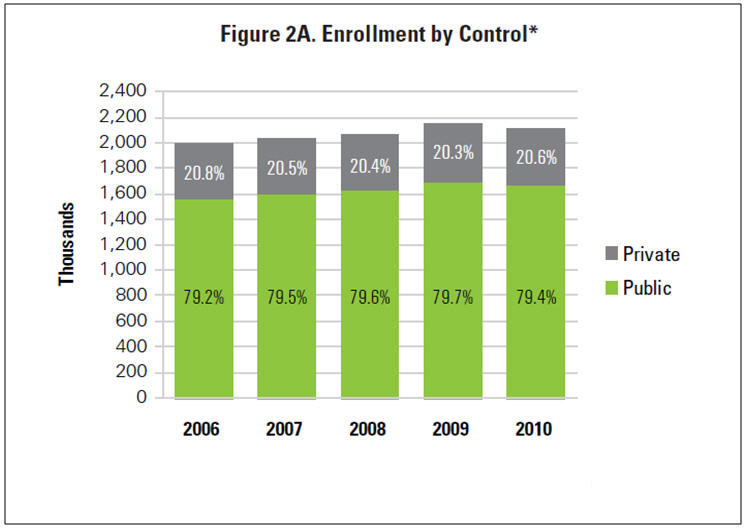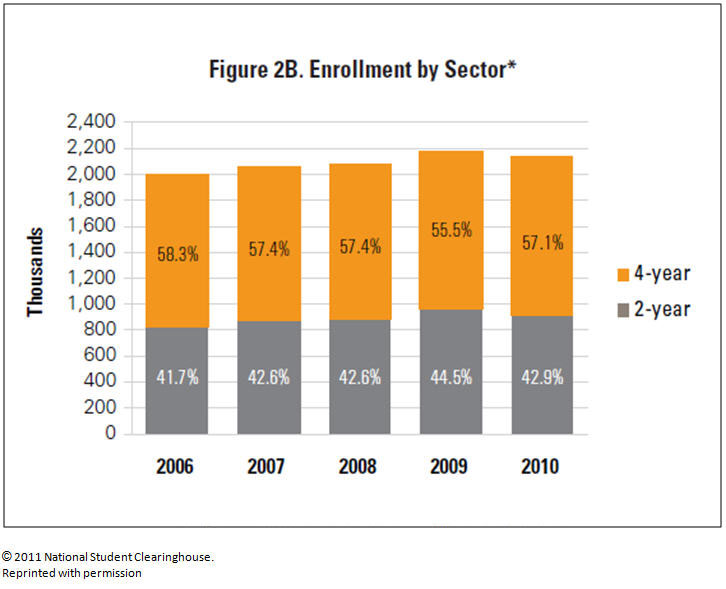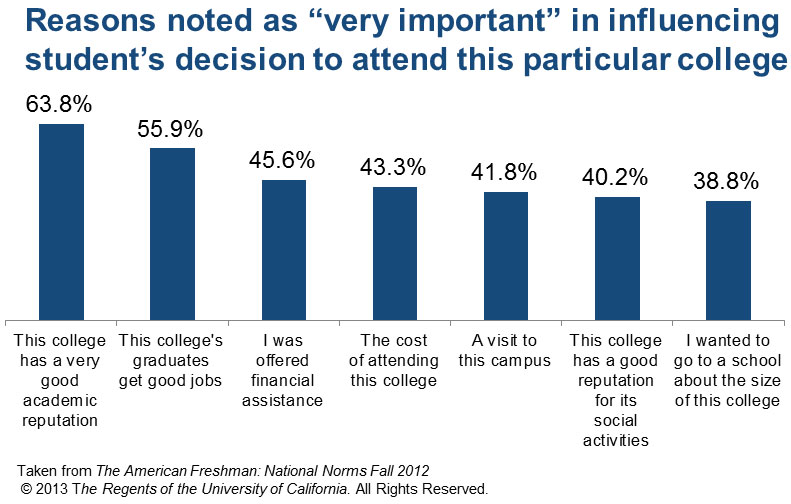enrollment
Enhancing an effective college communication flow with value proposition-centered messaging
Understanding what makes students and parents tick is one of the major requirements for an effective recruitment strategy. Even a “perfect” communications plan will yield minimal results if it lacks research about which items and issues influence your market. Such knowledge can guide how your campus should communicate with families and dictate a messaging strategy that helps to enforce your institution’s perceived value and worth.
For instance, colleges and universities have long pushed institutional fit as much as academic quality and outcomes, but this higher education market—along with all the other challenges it presents us—is not like those of the past. Today the market is far more consumer-minded. Although fit is still an important factor, it comes into play only after an institution is able to prove its ability to provide a strong return on investment. Even having struggled through the most recent recession, the market—based on the following National Student Clearinghouse research—did not waiver as experts had anticipated in the years immediately after the downturn.


The trends have continued in recent years, too. The latest data from the National Clearinghouse show that, between 2011-13, enrollments have increased slightly at four-year private colleges and universities, remained relatively flat at four-year public campuses, and declined at two-year public institutions.
The pundits had predicted that students/families would turn away from the more expensive option of private education for public post-secondary institutions, and for some students to enroll at two-year institutions at a higher rate. Interestingly, no real shift occurred, as the above graphs indicate. What does this begin to tell us? For one, families are willing to sacrifice for their child’s college education, even if it means choosing private over public, or public four-year over two-year. In no way is this meant to state that one institution type is better than another, but it does show that the impact of perceived value that families place on postsecondary institutions stays true even through a period of extreme economic distress.
What prospective students and their families value in a college education
So if families did not change their purchasing habits regarding college choice, and value is potentially a driving influencer, then how do they define value? In addition, if students and parents are willing to sacrifice to continue on to a four-year institution, or a private college/university, then how can you influence them to see your institution as the one they should choose?
The answers to these questions are the foundation to the change that most institutions of higher education must make in how they message and brand their school to the prospective student pool. Starting very early in the recruitment process, institutions must build a foundational understanding of the university based on how the school provides a strong return on investment to its students. Colleges and universities must make sure that the messaging is based on value propositions. What should institutions tie value to? Well, for this we should look to what the major influencers are for students. The below graph shows the reasons noted as “very important” in influencing a student’s decision to attend a particular college.

Although cost is a factor in the decision, the top influencers—by a good margin—are perceived academic reputation and whether graduates get good jobs (i.e. outcomes). But how effectively are campuses communicating this information to prospective students?
Developing strong value propositions at every stage of the college recruitment funnel
In my experience, most institutions do a fair to poor job of messaging these items to the broader audience. Many times this starts at the very beginning of the recruitment process. Too many colleges base their search communication strategy on just trying to get the student to respond, rather than educating the student/parent on why they should inquire. In fact, you should provide compelling reasons for the prospective student to continue at every stage of the funnel: why should they inquire, why should they apply, why should they deposit/enroll?
It’s also imperative to incorporate specific examples that promote academic quality and outcomes when answering those “why” questions. Institutions often attempt to communicate these benefits using vague phrases such as, “We provide a strong education thanks to our students having access to world-class faculty.” Although this may sound appealing, many schools could tout the same benefit. Colleges and universities must provide specific examples that not only prove why their educational offerings, faculty, and facilities are strong, but also differentiate those offerings from other institutions. Remember, you face a consumer-minded market that requires concrete proof rather than lofty, self-affirming sound-bites. Providing those specifics requires collecting specific examples and data, but the investment needed to do so will pay back in spades. These examples can then be included in print, electronic, phone, and in-person communications with students and parents throughout the recruitment funnel. (This is something we do for all campuses using our higher education marketing services.)
Beyond student recruitment, institutions should also look to incorporate value propositions in other marketing communications. Consistency in messaging equals branding. If admissions pushes academic quality, but the marketing department does not, it creates confusion in the public, and the brand is weakened. In addition, campuswide messaging based on value propositions gives your institution control of your brand. Most schools have allowed the market to dictate their brand back to them, when it is of vital importance that schools dictate their brand to the market. By consistently pushing a message that promotes value tied to a strong return on investment, institutions can begin to regain control of their brand while also promoting those items that are the greatest influencers for enrollment.
Communicating value propositions throughout the funnel will also make a significant difference during the challenging financial aid season. Institutions that have consistently communicated value, investment, academic quality, outcomes, and competitive advantage throughout the year place themselves in a more advantageous position during financial aid season than those that have committed to communicating more on process than on substance. Most colleges and universities will attempt to promote the “strong investment” card with families when discussing aid, but only those that have already established a strong understanding of value/ROI throughout the cycle will be able to fully capitalize on this discussion. Families will have a much clearer understanding of an institution’s features and benefits, how they relate to a student’s success while at school and after graduation, and therefore why they would be willing to make the sacrifice/investment.
All in all, colleges and universities must begin to structure their messaging strategy based on proving the institution’s strong return on investment to the market. By effectively collecting the data, information, and specific examples that will be used to promote the perception of academic quality and outcomes (at the institutional, schoo,l and departmental levels), colleges and universities can communicate to the market what they are most interested in hearing. This should lead to students/families becoming more willing to begin and continue a relationship with an institution all the way through to enrollment. So what are some data and information that should be collected and then integrated into a messaging strategy? Below are a few examples that help to enhance market perception of the two major areas identified as influencers to enrollment:
Academic quality
- Faculty recognition—International, national, and regional awards for their contributions to the field in teaching and/or research.
- Research opportunities, alongside faculty, provided to undergraduate students. Many times these opportunities are only afforded to graduate students.
- Institutional, school, and departmental rankings/recognitions at the international, national, and regional levels.
- Percentage of classes taught by full-time faculty.
- Faculty-published works that may garner market recognition.
Educational outcomes
- Six-month/one-year post-graduation job placement rates (preferably graduates’ top choice of employment).
- Graduate school placement rate that includes the graduates’ top choice and list of top graduate schools.
- Board certification/examination pass rates (i.e., CPA, NCLEX, teacher boards, etc.).
The reality is that adopting a value-proposition approach to your messaging strategy will provide you with a more robust communication plan. What is communicated to prospective students is now based much more on our understanding of what influences the market, rather than a vague synopsis of institutional offerings and communications that are far more process and information driven rather than influential in nature.
I hope you have found this post helpful. I also hope you share any of your own strategies for communicating value propositions in the comments, or email me if you have any questions about developing strong value propositions in your campus marketing communications.
